World Record-Breaking Tuna: Largest One Ever Caught
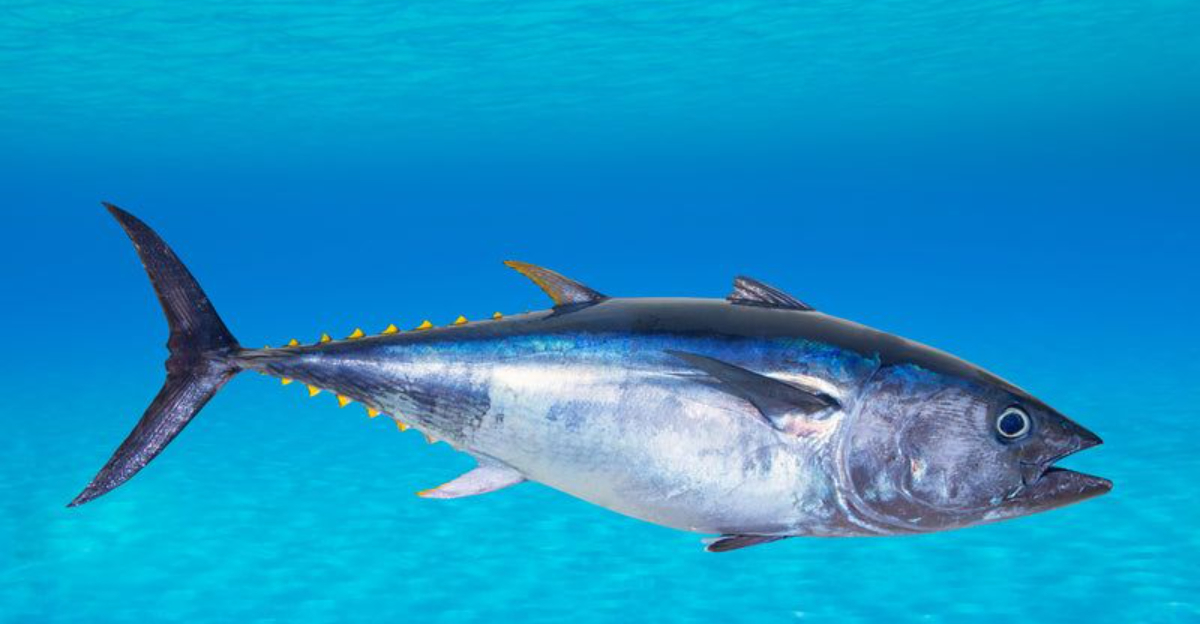
Imagine reeling in a fish so massive it shatters records and leaves the entire fishing community in awe. The world record tuna, the largest tuna ever caught, is a true marvel of the sea.
This incredible catch is not only a testament to the power and resilience of nature’s biggest fish but also to the skill and endurance of the fisherman who landed it.
1. The Giant Of Nova Scotia
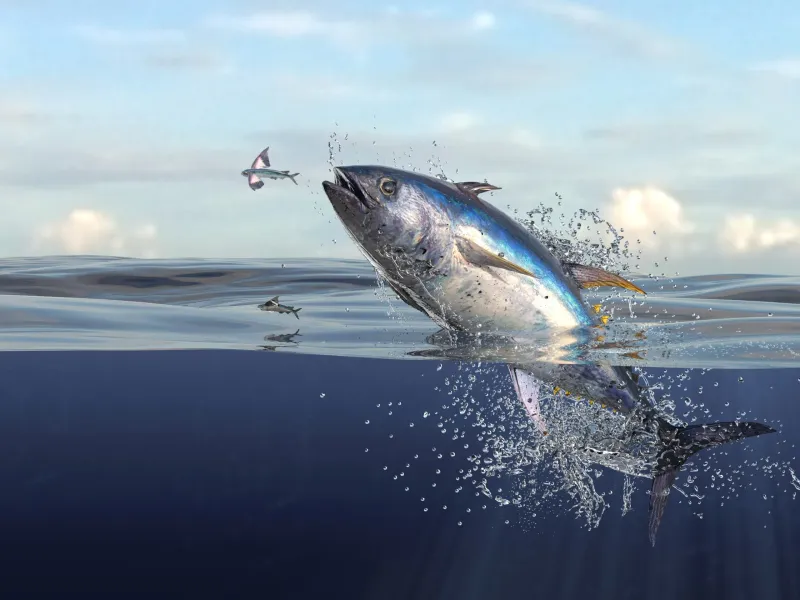
In the chilly waters off Nova Scotia, Canada, a monumental bluefin tuna was caught, setting a world record that still stands strong today. This iconic catch weighed an astounding 1,496 pounds, a size that boggles the mind. Imagine the strength and perseverance required by the angler to reel in such a colossal creature, a feat of endurance and skill seldom matched. This bluefin was not just any fish; it was a titan of the sea, embodying the raw power and mystery of the ocean’s depths.
The catch took place in 1979, a time when fishing techniques were a blend of traditional and evolving methods. The excitement of that day echoes through the annals of fishing lore, inspiring anglers to this day. The sheer size of this tuna was unparalleled, drawing attention from media worldwide, and cementing its place in history as the largest tuna ever caught. To this day, it represents the pinnacle of fishing achievement, a testament to the wonders lurking beneath the waves.
This record serves as a challenge for fishermen everywhere, a monumental benchmark that fuels the dreams of those hoping to one day break it.
2. Speedsters Of The Sea
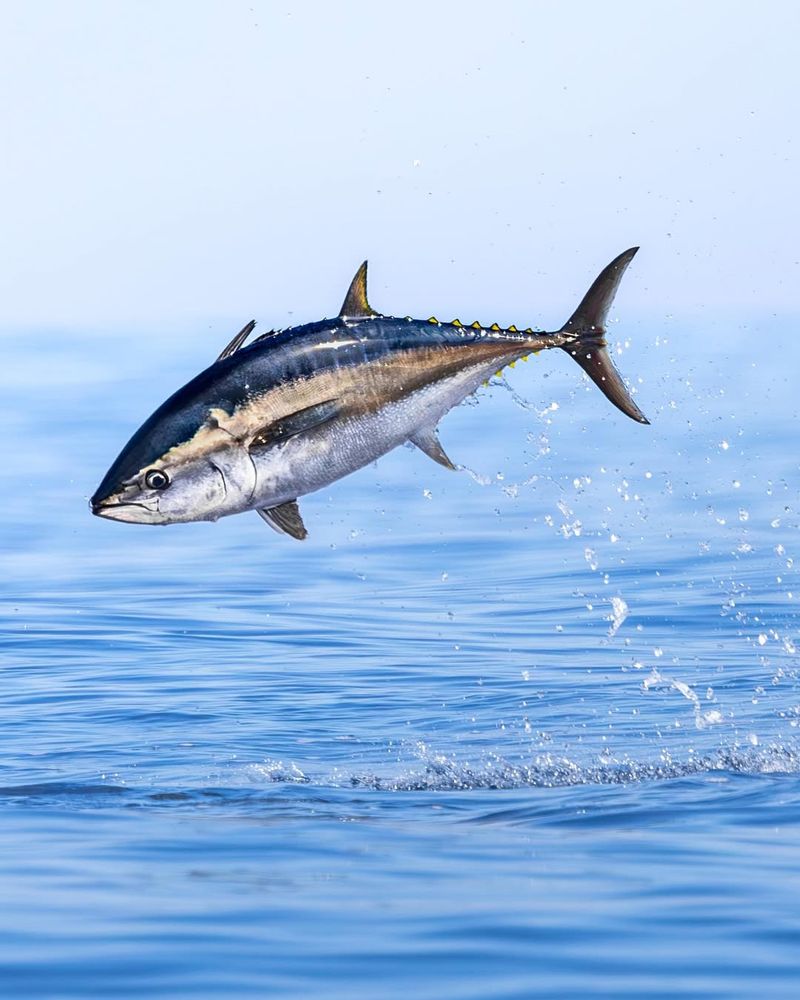
Bluefin tuna are often referred to as the speed demons of the sea, capable of reaching speeds up to 43 miles per hour. This incredible velocity is not just for show; it allows them to cover vast distances during their migratory journeys. Their streamlined bodies are masterfully designed for swift movement, cutting through water with grace and precision.
These oceanic sprinters utilize their speed to hunt prey, evading predators and traveling across oceans with astounding efficiency. Their muscular build and unique adaptations, such as the ability to regulate their body temperature, give them a distinct edge in their aquatic realm.
The bluefin’s speed is a marvel of nature, drawing comparisons to the fastest creatures on land. The agility and quickness of these fish make them a formidable force in the ocean, a true testament to the wonders of evolution. Observing a bluefin tuna in action is witnessing nature’s engineering at its finest, a breathtaking fusion of power and elegance. It’s no wonder these speed demons captivate the imagination of scientists and ocean enthusiasts alike.
3. A Lifespan Of Adventure
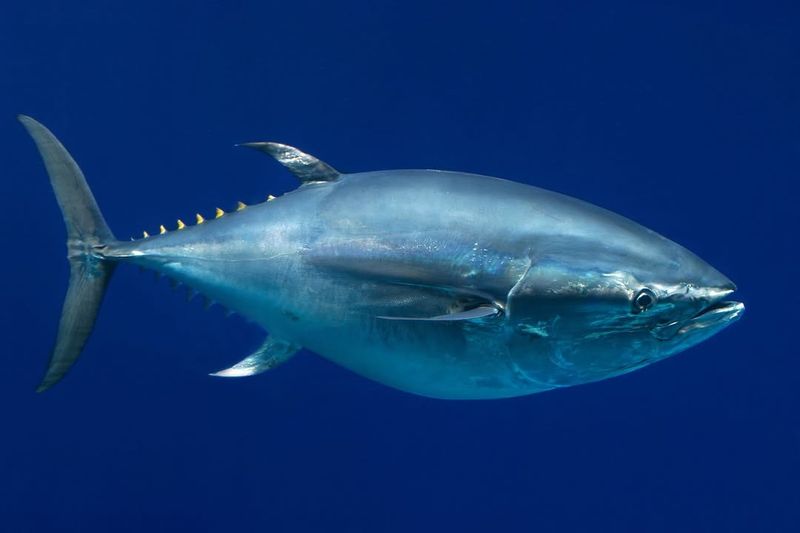
The life of a bluefin tuna is a journey filled with epic adventures across the world’s oceans. These formidable fish can live for over 40 years, a lifespan that allows them to traverse vast distances and witness countless changes in their environment. Each year, they migrate thousands of miles, often crossing entire ocean basins, showcasing their incredible endurance and navigational prowess.
Throughout their lives, bluefin tunas experience the dynamic and ever-changing ecosystem of the ocean. From the icy waters of the North Atlantic to the warm currents of the Mediterranean, they adapt and thrive, facing challenges with resilience and strength. This migratory lifestyle is not only a testament to their physical capabilities but also to their role in the marine food web.
The journey of a bluefin tuna is one of intrigue and wonder, filled with encounters with diverse marine life and the natural elements. Their long and adventurous lives make them one of the most fascinating species in the ocean. Each tuna carries a story of survival and exploration, a living testament to the beauty and complexity of ocean life.
4. The Battle Of Giants
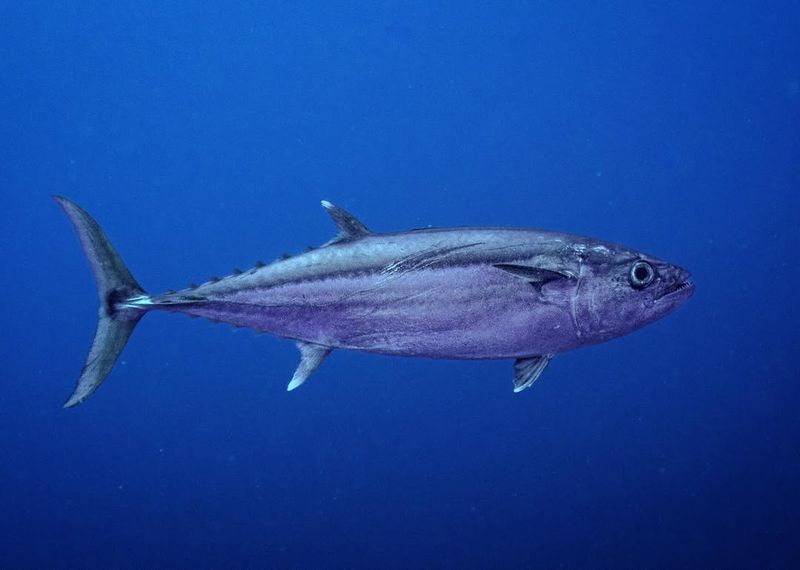
Catching a world record tuna is often described as a battle of giants, a struggle between human determination and the raw power of nature. Anglers who embark on this quest face an uphill battle, pitting their wits and strength against one of the ocean’s most formidable creatures.
The fight to reel in a massive bluefin tuna can last for hours, testing the endurance and skill of even the most seasoned fishermen. With each pull of the line and every surge of the fish, the tension builds, creating a dramatic narrative of man versus nature.
This challenging endeavor has become a rite of passage for many anglers, a chance to test their mettle against the ultimate adversary. Success in this battle is not just about the catch itself, but the journey and struggle that precede it, creating stories that are passed down through generations. This iconic contest embodies the spirit of adventure and the timeless allure of the sea, drawing anglers into the depths in search of glory.
5. Tuna’s Global Odyssey
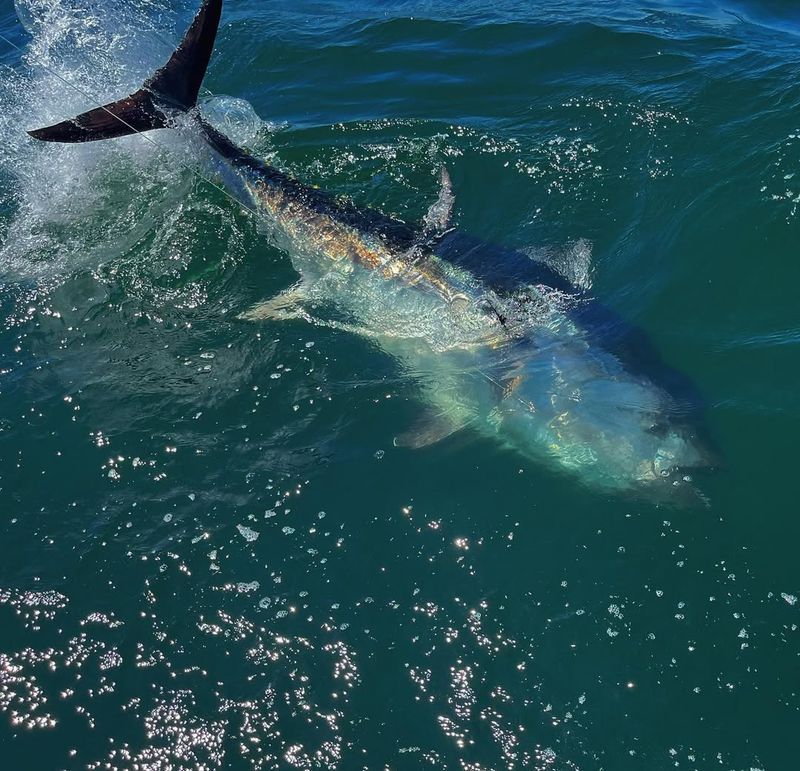
Embarking on a global odyssey, bluefin tuna undertake one of nature’s most remarkable migrations. These majestic fish traverse the Atlantic and Pacific Oceans, covering thousands of miles each year in search of breeding grounds and feeding areas. This incredible journey is driven by their instinctual need to spawn and find sustenance.
Their migratory routes are awe-inspiring, often spanning entire ocean basins and crossing international waters, connecting marine ecosystems worldwide. This journey requires a perfect blend of endurance, navigation skills, and timing, as they follow the ocean’s seasonal rhythms.
The sheer scope of their migration highlights the interconnectedness of our oceans and the delicate balance within marine ecosystems. Observing their paths offers insights into ocean currents, climate change, and the health of marine environments. Each year, bluefin tuna embark on this epic voyage, a testament to the resilience and adaptability of these extraordinary creatures. Their global odyssey is a reminder of the wonders of our natural world and the mysteries that lie beneath the sea.
6. The Perfect Predator
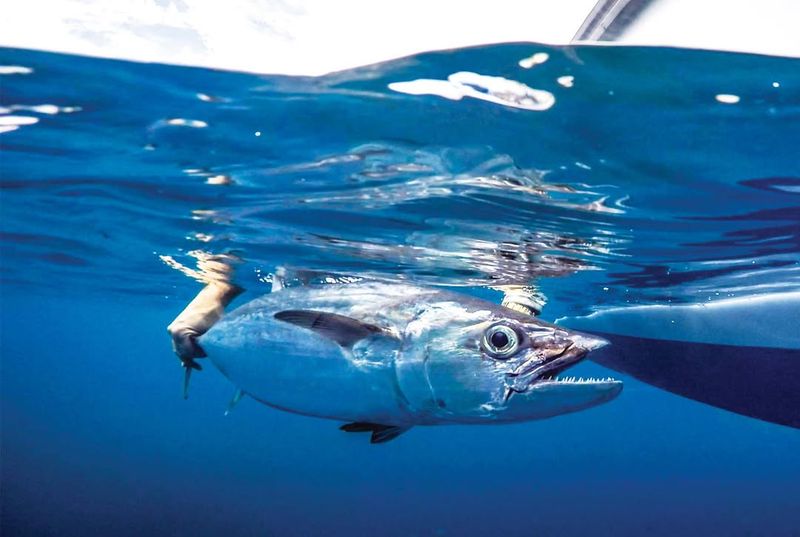
Bluefin tuna are often hailed as the perfect predators of the sea, combining speed, strength, and intelligence to dominate their environment. Their sharp vision and acute sense of smell make them expert hunters, capable of detecting prey from great distances. With lightning-fast reflexes, they can quickly close in on their target, turning the ocean into their personal hunting ground.
Their diet is diverse, including smaller fish, squid, and crustaceans, which they pursue with relentless determination. The bluefin’s muscular build and streamlined body allow it to execute swift, precise movements, making it an apex predator in its ecosystem.
Beyond their physical attributes, bluefin tuna exhibit sophisticated hunting strategies, often working in groups to herd prey into tight schools. This social hunting behavior enhances their efficiency, showcasing their intelligence and adaptability. The perfect predator, a bluefin tuna is a marvel of biological engineering, excelling in the art of survival. Their predatory prowess is a captivating spectacle, demonstrating the intricate balance of life beneath the waves.
7. Tuna’s Intelligent Design
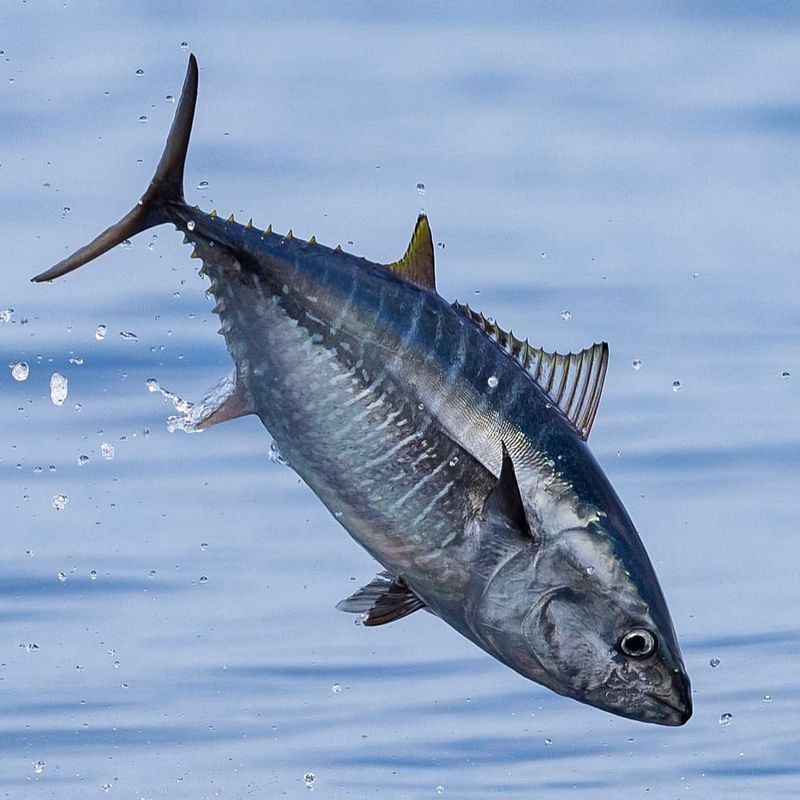
The bluefin tuna is a masterpiece of intelligent design, with a body built for speed, power, and efficiency. Their streamlined shape reduces drag, allowing them to glide through water effortlessly. This aerodynamic design is complemented by a muscular build that provides immense strength and endurance, essential for their long migratory journeys.
Internally, bluefin tuna are equipped with several remarkable adaptations. Their ability to regulate body temperature sets them apart from most other fish, allowing them to thrive in a range of oceanic environments. This endothermic capability enhances their stamina and hunting efficiency, making them formidable predators.
Their circulatory system is equally sophisticated, featuring a unique network of blood vessels that maximize oxygen intake and delivery to muscles. This adaptation is crucial for sustaining high speeds and navigating vast distances. Every aspect of the bluefin tuna’s design speaks to its evolutionary success, a testament to the complexity and genius of nature. Witnessing a bluefin in motion is to see an elegant harmony of form and function, a true wonder of the ocean.
8. Guardians Of The Sea’s Future
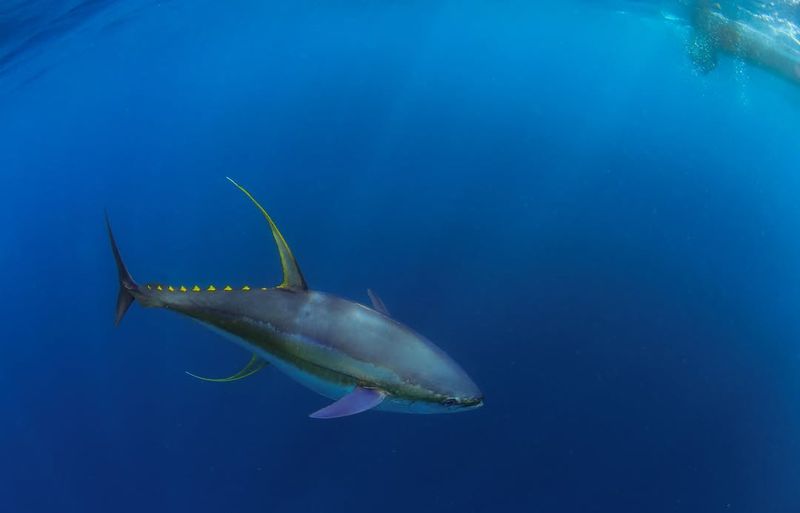
As guardians of the sea’s future, conservationists are working tirelessly to protect the majestic bluefin tuna. Due to overfishing and environmental changes, their populations have faced significant declines in recent decades. Recognizing the importance of these creatures in marine ecosystems, efforts are being made worldwide to ensure their survival for future generations.
Initiatives include establishing marine reserves, enforcing sustainable fishing practices, and conducting research to better understand their habits and needs. These efforts aim to balance human interests with ecological health, promoting a future where bluefin tuna can thrive alongside the communities that depend on them.
The conservation journey is a collaborative endeavor, involving governments, scientists, and local communities working together to make a difference. Their dedication is driven by a shared vision of a vibrant ocean teeming with life, where bluefin tuna continue to roam as the titans of the deep. This mission is a testament to the power of collective action, ensuring that these magnificent creatures remain a part of our planet’s rich biodiversity.
9. Apex Of Ocean Predators
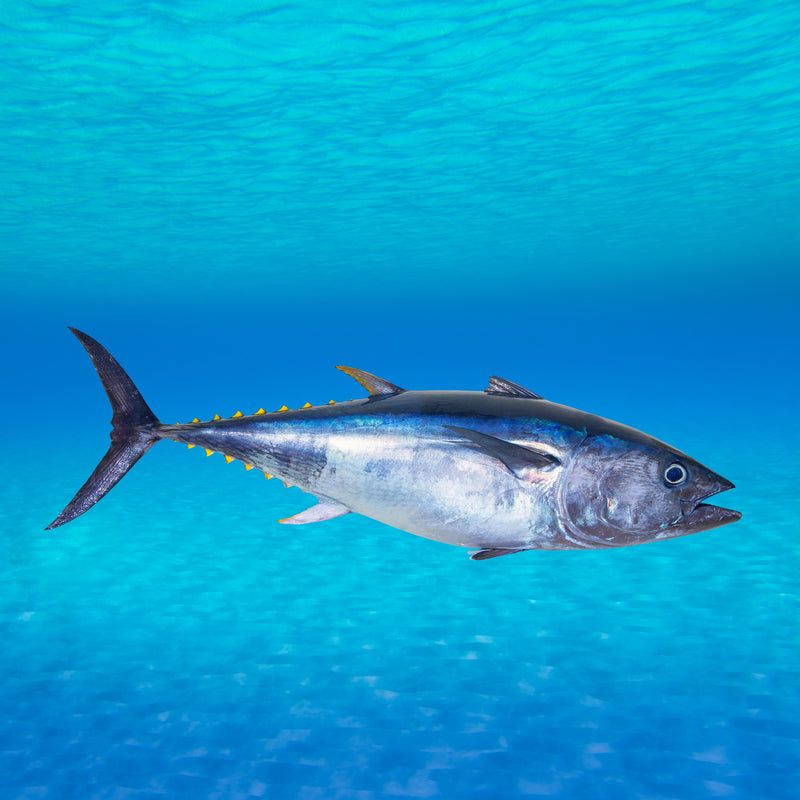
Tuna sit at the top of the food chain in the ocean. Their size, speed, and sharp hunting instincts make them a dominant force in the marine ecosystem.
With powerful jaws and keen vision, tuna hunt a wide range of prey, from smaller fish to squid. Their role as apex predators helps regulate the populations of other species, maintaining a balance within the ecosystem.
This status not only makes them essential to ocean health but also highlights their impressive physical capabilities.
10. The Tuna’s Majestic Journey
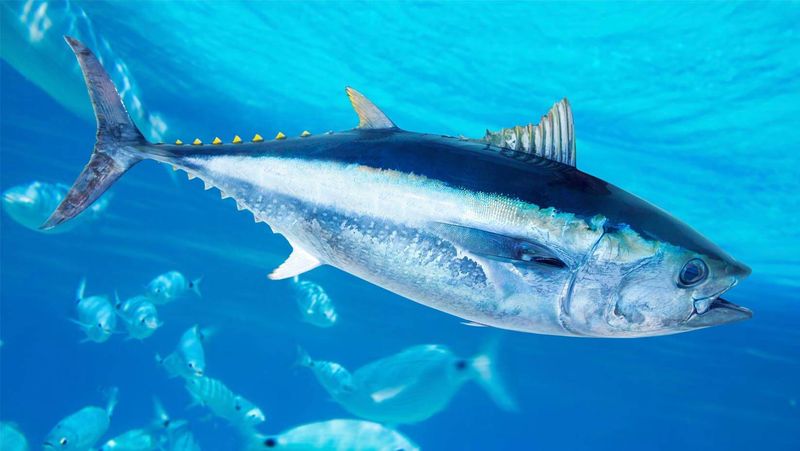
Tuna are known for their incredible migrations, traveling thousands of miles across oceans in search of food and better breeding grounds. These magnificent creatures are capable of navigating vast distances with remarkable precision.
Their migratory patterns highlight the tuna’s adaptability and survival instincts, as they move between temperate and tropical waters, always on the move.
This journey, often covering wide expanses of the globe, underscores the tuna’s status as one of the ocean’s true adventurers.






